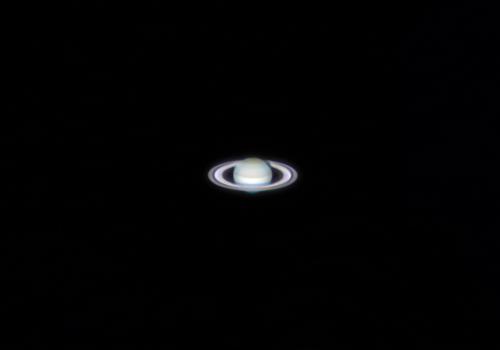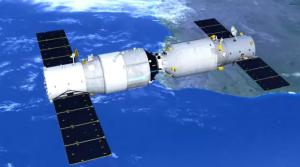Celebration of Space - August 27, 2021
Have you noticed the bright star that has been hanging around the southeast sky during the evening hours lately? Well that’s not a star, it’s actually the largest planet in the Solar System. Jupiter is so big that even at a distance of 374 million miles, it will outshine everything in the night sky aside from Venus and the Moon. But did you know that Jupiter’s four Galilean Moons are also naked eye visible?
Jupiter’s four Galilean Moons, from the closest to the furthest from Jupiter, are Io, Europa, Ganymede, and Callisto. Ganymede is the largest of the four, and the largest moon in the Solar System, coming in at 77% the size of Mars. Europa is the smallest of the four, coming in at 89.9% the size of Earth’s moon. Both of these moon have a visual magnitude of 4.5 and 5.19, which is within the naked eye limit of magnitude 6, which applies to a location like Frosty Drew. Some of the best observing locations in the world can get as high as magnitude 7. Note that the higher the number the dimmer the object. Callisto and Io both have a visible magnitude of 5.6 and 4.9. Callisto is quite large, but it’s dark surface reflects less light than the other three moons, which brings down its visibility. Even though Europa has a similar reflective property (called albedo) it is the smallest of the four, which decreases its visible brightness. The reason we do not readily see Jupiter’s Galilean Moons without an optical aid is because they appear so close to Jupiter itself, which is also intensely brighter and obscures our view of the moons. But you still can see them if you try. When looking at Jupiter try to note that one or two of the sprites that you see emanating from Jupiter may appear a little longer or more pronounced. That’s because it’s not a sprite, but the Galilean Moons. This is a tough challenge and will need to happen on a clear night without the presence of Earth’s moon’s larger phases (because it brightens the sky). Give it a try and let us know if you can see Jupiter’s moons.
While looking towards Jupiter, you may have also noticed a much dimmer star further west but still bright enough to stand out. Well that isn’t a star either, it’s actually the planet Saturn. But why so dim compared to Jupiter, when they are both so big? Well Saturn is 16.7% smaller in diameter than Jupiter, but Saturn’s rings are quite bright and add a significant amount of brightening to the overall reflectivity of Saturn. The problem is that Saturn is so much further from us than Jupiter. During opposition Saturn is 457,528,879 mile further from Earth than Jupiter is during its opposition (opposition happens when an outer planet is directly on the opposite side of Earth than the Sun, placing the planet at its closest to Earth). Placing Saturn more than twice the distance that Jupiter is from Earth! Being that much further from us seriously decreases Saturn’s brightness in our sky.
With so many potentially excellent nights over the next couple of weeks, step outside in twilight or wait until darkness sets in, sit back with a cup of coffee or a nice after-work drink and have a night with the two largest planets in the Solar System.
Evening passes of China’s space station – Tiangong will continue this weekend and next week. Tiangong is the most recent addition to Earth orbit of a habitable space. With only the first of three modules currently in orbit, the station is already quite bright, and easily visible when passing over. Here are some notable pass times for the next several nights:
Fri, Aug 27 at 8:15 pm, starting in the WSW, rising to 51°, heading towards the E
Sat, Aug 28 at 8:50 pm, starting in the W, passing overhead and into orbital sunset ← Fabulous Pass!
Sun, Aug 29 at 7:48, starting in the WSW, rising to 70°, heading towards the E ← Fabulous Pass!
Mon, Aug 30 at 8:23 pm, starting in the W, rising to 86°, heading towards the E and into orbital sunset ← Fabulous Pass!
Tue, Aug 31 at 8:58 pm, starting in the W, rising to 80°, and into orbital sunset ← Fabulous Pass!
Wed, Sep 1, at 7:56 pm, starting in the W, passing overhead, heading towards the E ← Fabulous Pass!
Thu, Sep 2 at 8:31 pm, starting in th eW, rising to 62°, and into orbital sunset ← Fabulous Pass!
With so many amazing passes happening this weekend and coming week, there is no excuse (well aside from New England weather) for not stopping outside to catch that inspirational view of what we can achieve when we put fear aside. So enjoy the cooler temps these coming evenings with a spotting of Tiangong passing overhead. For daily pass times of Tiangong and other bright satellites, visit the Frosty Drew Daily Satellite Prediction utility.
- Author:
- Scott MacNeill
- Entry Date:
- Aug 27, 2021
- Published Under:
- Scott MacNeill's Columns




